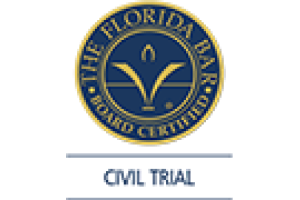Client Reviews
Dangerous / Unsafe / Defective Equipment
Those who work in the construction industry must handle or come in contact with many different kinds of machinery, tools and equipment.
Technological advancements over the last century within the construction industry are actually quite remarkable, allowing crews to work more efficiently on major projects, significantly reducing the time it takes to finish.
Associates and Bruce L. Scheiner, Attorneys for the Injured, recognize however that the goals of efficiency and expediency don’t always align with safety. If construction firms fail to properly train workers to handle these tools, withhold the right safety equipment needed for operation or don’t adequately inspect or maintain equipment, the potential for injury is high.
Likewise, if equipment isn’t designed or manufactured according to strict safety specifications or with contingencies for foreseeable risks stemming from reasonable use, workers are even more likely to get hurt.
Dangers of Defective Construction Equipment
While defective tools and equipment can be problematic in any industry, muscle and size of the equipment used in construction work increases the chances that any resulting injuries will be catastrophic or fatal.
The Occupational Health and Safety Administration (OSHA) counts more than 1,000 construction worker fatalities every year. Many of those workers would be alive today if not for failure of the manufacturer to provide safe equipment, or for the negligence of those individuals and companies responsible for inspection, maintenance and repair.
Defective construction equipment known to result in serious injury or death include:
- Ladders
- Forklifts
- Cranes
- Saws
- Sanders
- Polishers
- Extractors
- Derricks
- Winches
- Graters
- Scrapers
- Nail guns
- Pressure Vessels
- Bulldozers
- Backhoes
- Bobcats
- Pallet Jacks
- Skid-Steer Loaders
Consider that in forklift accidents alone, federal regulators estimate 100 workers die and another 20,000 are seriously injured. Potential injuries can range from minor lacerations and sprains to deep gashes, amputations, head and neck injuries, internal damage, crush injuries and even death.
Product Liability for Construction Injuries
Although employers are typically shielded from litigation under workers’ compensation law, there may be legal grounds upon which to file a lawsuit against designers, manufacturers and/or distributors of defective or unsafe equipment.
Generally, a product liability case has to show the product caused injury, that the product was defective and that the defect made the equipment unreasonably dangerous.
Defective design, defective manufacture and failure to warn are the three primary claims that might be brought in the case of injury caused by defective construction equipment.
- Design defects. Plaintiff has to show that before the product was even manufactured or constructed, that it was flawed. Something in the design of the machine or tool made it inherently unsafe.
- Manufacturing defects. Plaintiffs must show there was a problem in the assembly or manufacture of the tool that made it unsafe. This could include failure to install all necessary parts or adding one part too many or using product components that were cracked or flimsy.
- Marketing defects. Plaintiff has to show there is a flaw in the way the machine or tool was marketed. Usually in cases of construction product defect, this would include an issue of improper labeling, inadequate safety warnings or inefficient instructions.
Sometimes, the question arises in these cases of whether the product was altered beyond its intended use at the time of the accident. Defendants will try to claim alteration of their product is not something for which they can be held liable. But this assertion is not always correct. The fact is, manufacturers can be responsible for injuries resulting after alterations if those alterations render the product unsafe and if the manufacturer knows or should know the employer and/or other user is likely to make such changes.
This happens more than one might think, and in such cases, designers/manufacturers/distributors have a duty to warn against such use or the potential for danger.
Failure to maintain and repair equipment could also potentially fall on the shoulders of the manufacturer if that company did not give adequate instructions on how the product was to be maintained and repaired.
Workers injured as a result of a defective or dangerous machinery are likely to need to file more than one claim. There will probably be a claim for workers’ compensation (or workers’ compensation death benefits), as well as a claim for personal injury against one or more third parties. That’s why these cases require a legal team not only with dedication and compassion, but extensive experience and proven success.
Contact Associates and Bruce L. Scheiner, Attorneys for the Injured, for a free and confidential consultation to discuss your rights. There are no fees or costs unless we win. Offices in Fort Myers, Cape Coral, Naples and Port Charlotte.
Call 800-646-1210 for a Free Consultation












